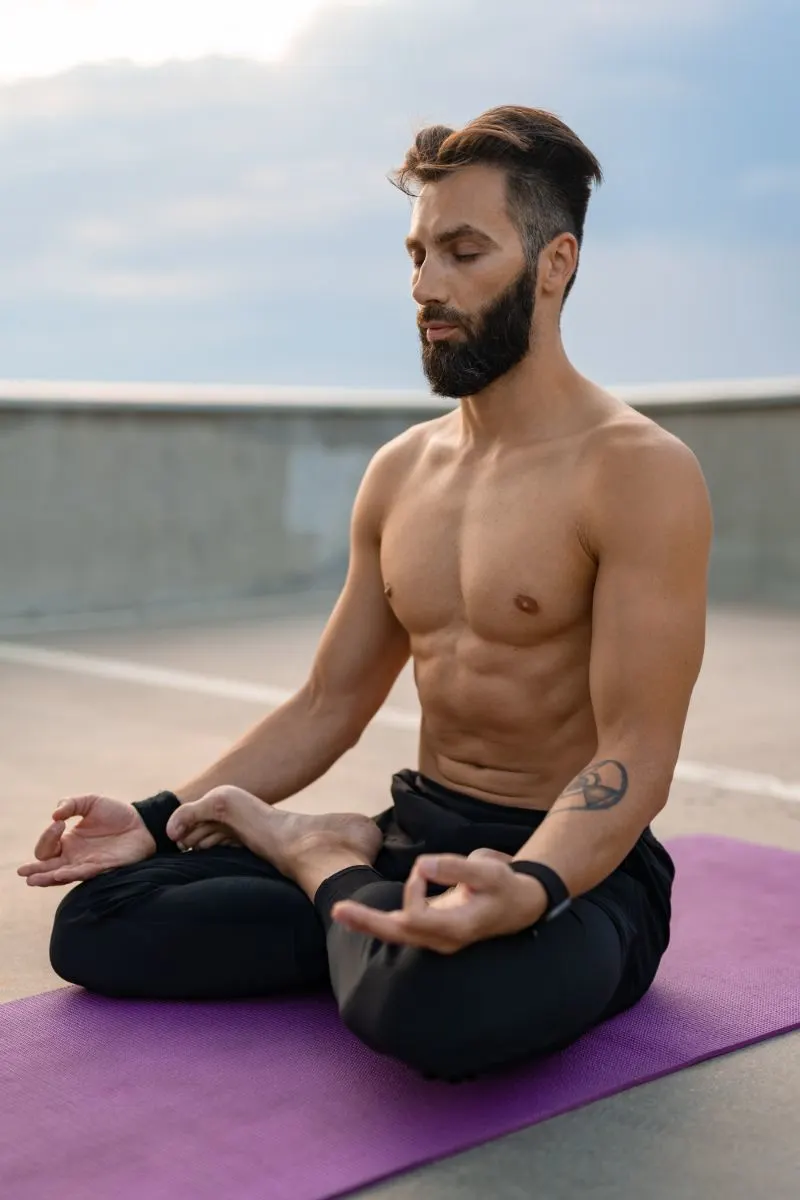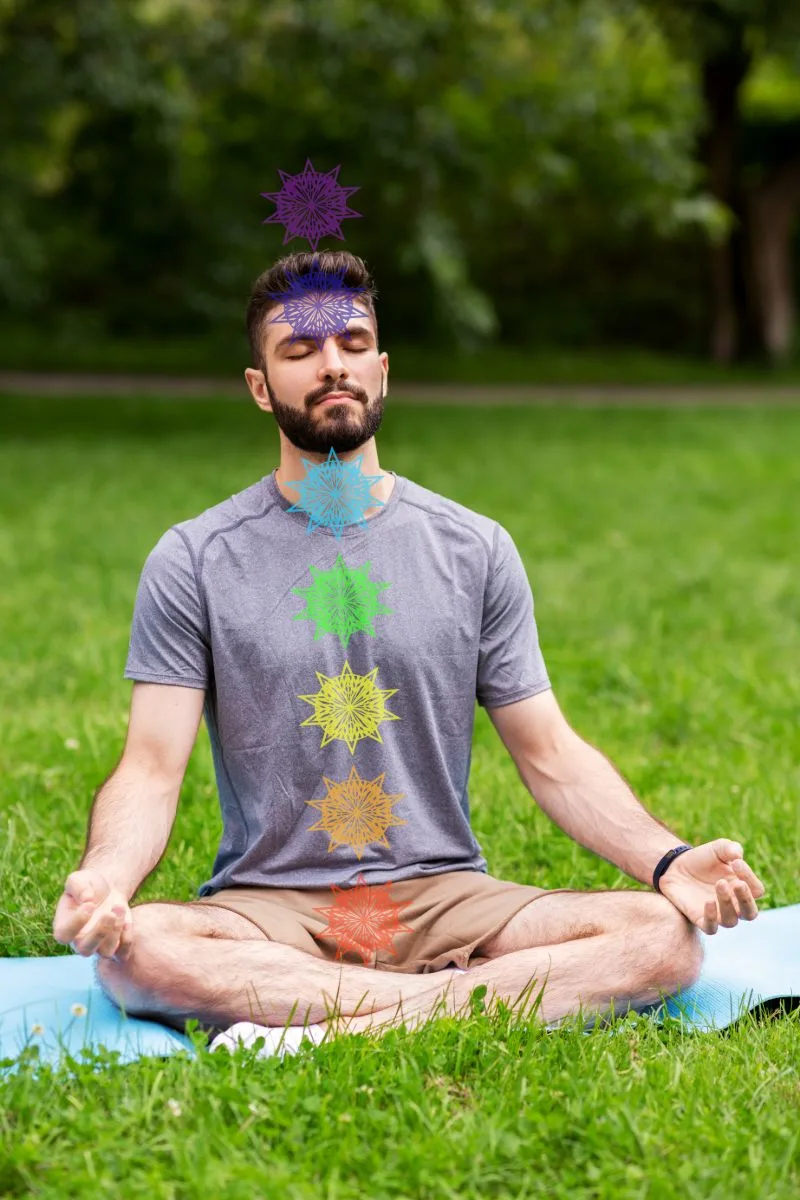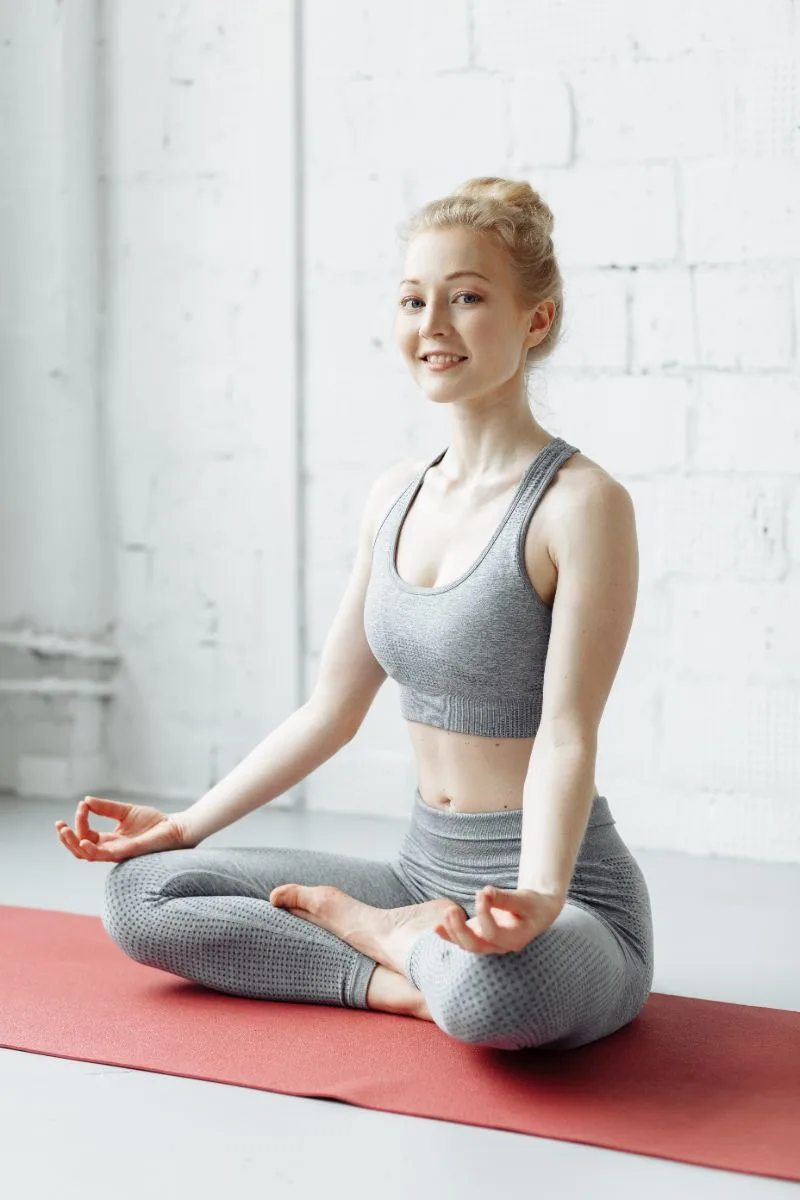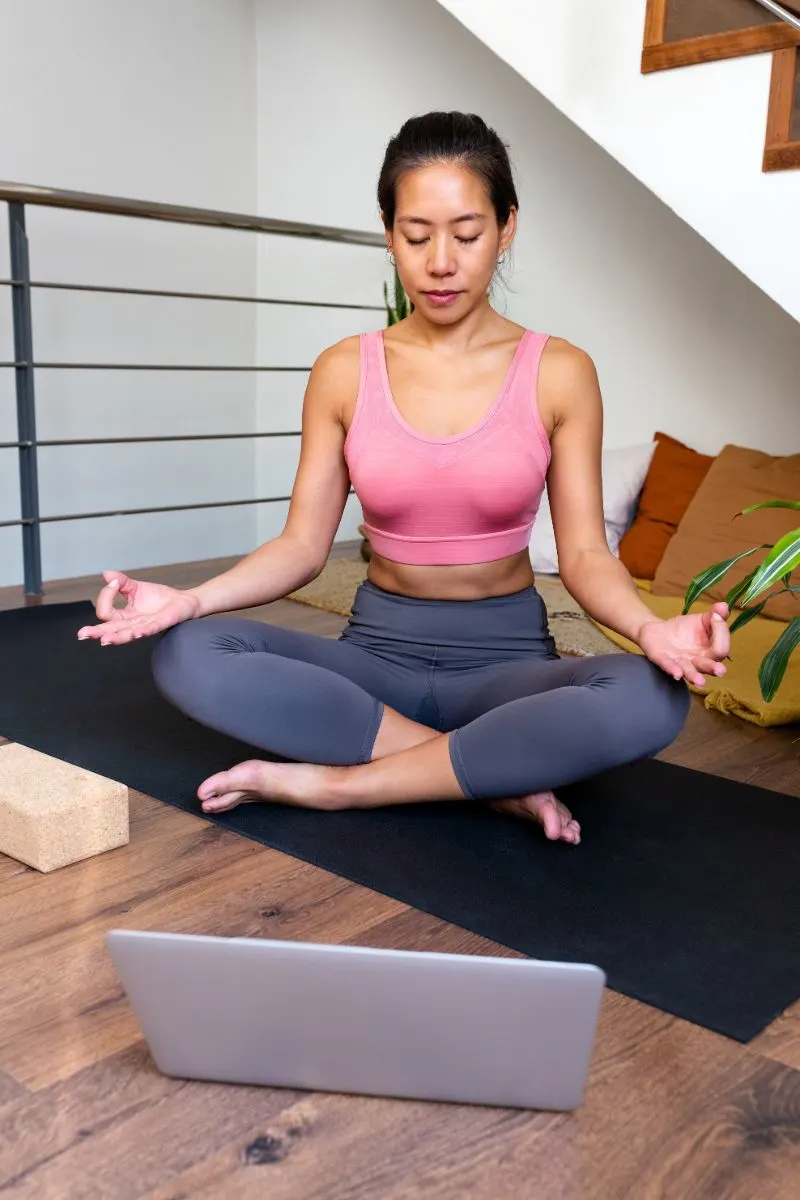In Sanskrit, the word Sukha means “pleasant” or “comfortable” and asana means “posture”.
Sukhasana is the basic position with legs crossed, excellent for meditation, pranayama (breathing technique) and the beginning of a yoga class.
Maintaining Sukhasana posture for several minutes allows a person to detach from the outside world and return to a self-introspective analysis.
For meditation, it is recommended that you find a comfortable position that allows you to focus on introspection, while the spine is straight and extended.
Sukhasana Posture – Step By Step
Sit on your bottom on the exercise carpet. For more comfort, you can place a blanket or other support under the bottom. When setting the height of the support you choose, bear in mind that the knees should not exceed the line of hips.
The starting position must be the specific Dandasana posture, straight back and legs extended in front. Cross your legs and place your feet under your knees. Relax your shoulders, lift the sternum and extend the spine as much as you can, without exceeding the limits of comfort.
Feet Position
Cross your legs so that the meeting point is approximately at the half of the tibia.
Heels should be oriented sideways and toes in front. The foot must be placed under the knees.
The body’s balance will be maintained in this position using the pelvic bones. Also, the body’s weight should be evenly distributed on the pelvic bones’ level. An important aspect of this exercise is to respect the normal line of the spine in the lower back area.
If the support beneath the basin is too high, the knees will remain suspended in the air. In this situation, it is advisable to place a yoga block under each knee, to ensure a stable support for them. Relax the muscles in the inguinal area and allow the feet to get as close as possible to the ground.
If the meditation and pranayama sessions are extended, you should constantly change the position of the foot sitting above. This ensures a good blood circulation to the legs and, at the same time, it prevents the sensation of numbness of the foot placed underneath.
Breathing
Keeping the spine extended, breathe deeply, allowing a larger volume of air to enter the lungs. During the entire duration of this exercise, the eyes must remain closed and the facial muscles relaxed. Hands must be placed on the knees and the shoulders and spine alignment must be similar to Tadasana posture.
Tips for beginners
If your body’s flexibility doesn’t allow crossing the legs with the knees on the ground, it is extremely important to use knee supports. In addition, it is necessary to make sure not to cover the whole ankle area when you cross your legs. Also, place a collapsed cover under your knees or your hip bones.
Advantages of Easy Sitting Pose
Practicing the Sukhasana posture after a stressful and tiring day helps you get over the fatigue and feel more rested.
If you are mentally stressed, either because of your job or the monotony of it, this practice can offer peace and mental calm.
When performing this posture, the spine remains in an ideal position, making the asana beneficial for those suffering from back pain.
This asana helps the practitioner gain and improve flexibility in the waist and lower area.
It improves awareness regarding the body’s posture.
Your back becomes steadier and stronger with regular practice of the Easy Pose.
It facilitates meditation and pranayama.
Cautions
Sukhasana can be done by people of all age groups. But, people who have suffered knee injuries should avoid this posture until the healing process is complete. Also, practice extra caution if you have a slipped disc problem.

